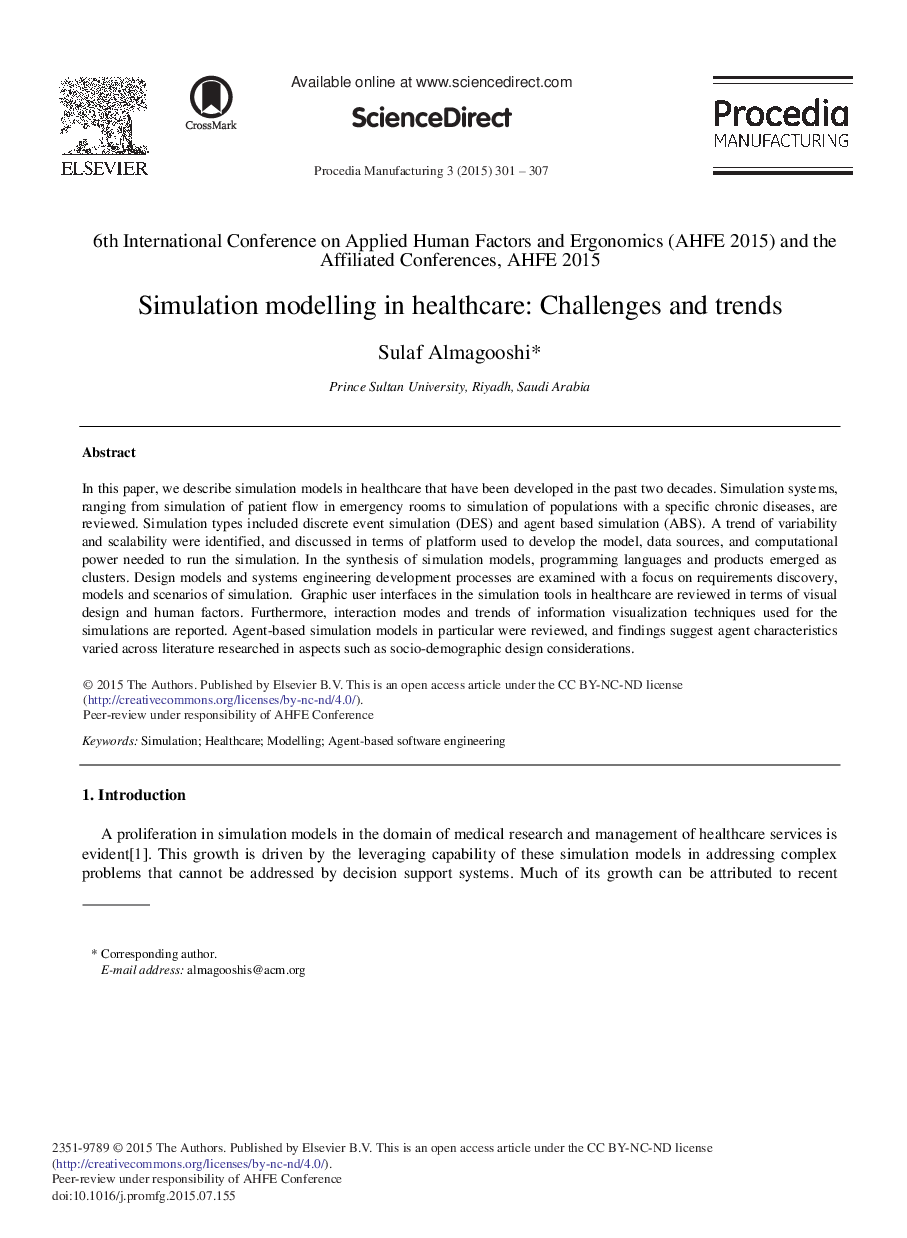| Article ID | Journal | Published Year | Pages | File Type |
|---|---|---|---|---|
| 1143801 | Procedia Manufacturing | 2015 | 7 Pages |
In this paper, we describe simulation models in healthcare that have been developed in the past two decades. Simulation systems, ranging from simulation of patient flow in emergency rooms to simulation of populations with a specific chronic diseases, are reviewed. Simulation types included discrete event simulation (DES) and agent based simulation (ABS). A trend of variability and scalability were identified, and discussed in terms of platform used to develop the model, data sources, and computational power needed to run the simulation. In the synthesis of simulation models, programming languages and products emerged as clusters. Design models and systems engineering development processes are examined with a focus on requirements discovery, models and scenarios of simulation. Graphic user interfaces in the simulation tools in healthcare are reviewed in terms of visual design and human factors. Furthermore, interaction modes and trends of information visualization techniques used for the simulations are reported. Agent-based simulation models in particular were reviewed, and findings suggest agent characteristics varied across literature researched in aspects such as socio-demographic design considerations.
